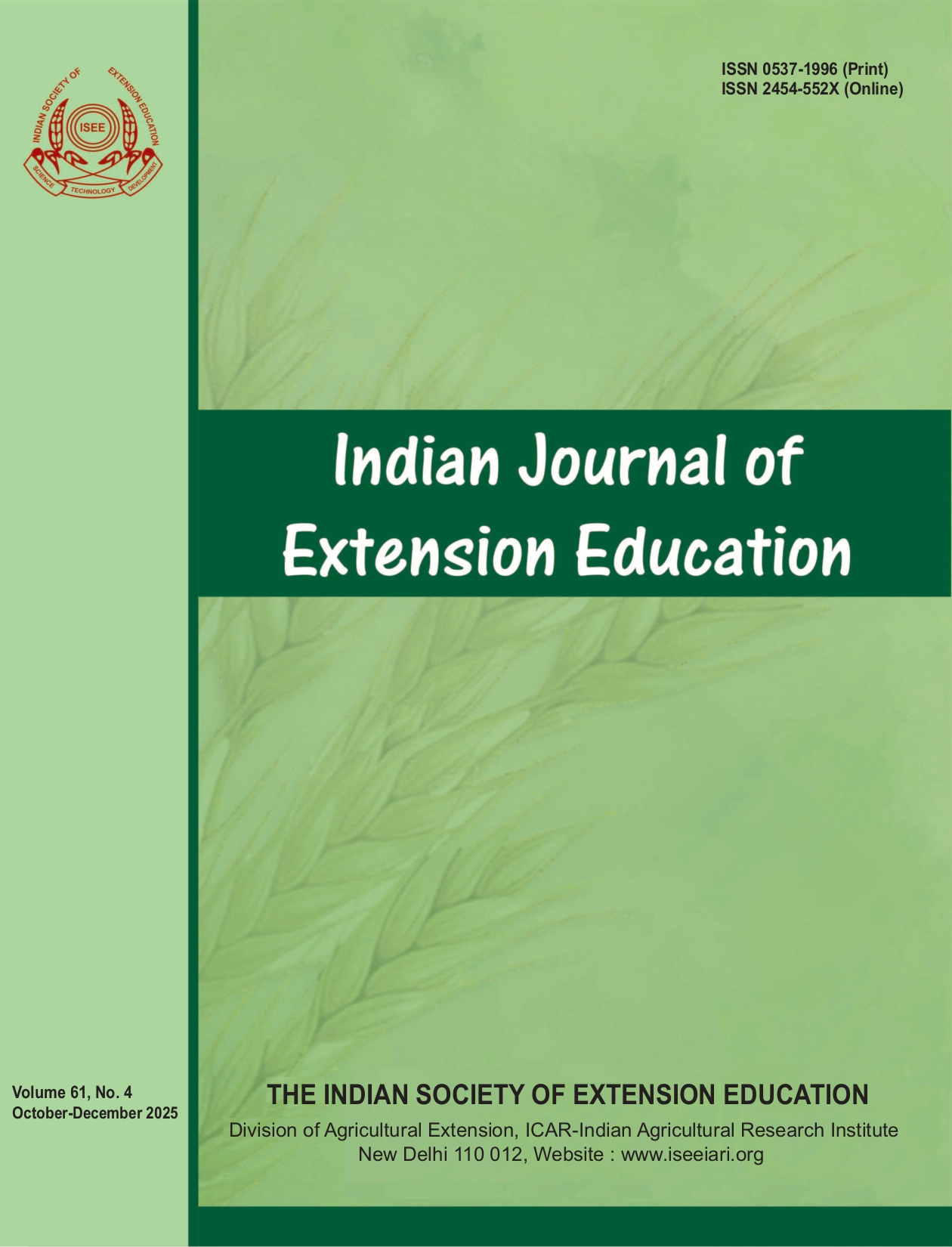Barriers to Handicraft Development in Rural Saravan, Iran: A Bayesian Network and Fuzzy AHP Analysis
143 / 158
Keywords:
Barriers, Governance, Handicrafts, Rural development, Sustainability.Abstract
The study examined the key barriers hindering the development of the handicraft sector in Saravan, Iran, with a focus on identifying their significance and interrelationships. Despite the global recognition of Saravan’s Kalporagan pottery, a 7,000-year-old tradition preserved by local women, the region’s handicraft industry has faced persistent stagnation. A mixed-method approach was adopted, utilizing the Fuzzy Analytical Hierarchy Process (FAHP) to categorize barriers into six main groups: managerial, motivational-psychological, marketing and sales, financial-economic, skill-technical, and product-based. This study was conducted in 2024. The findings showed that managerial barriers were the most critical, followed by motivational and marketing challenges, while product-related barriers had the least impact. To explore causal connections among these barriers, Bayesian Network Analysis (BNA) was applied, revealing that managerial shortcomings significantly influenced financial and marketing constraints. The study concluded that addressing managerial inefficiencies could alleviate other development obstacles. It emphasized the need for targeted institutional reforms, investment in tourism infrastructure, and improved market access to revitalize Saravan’s handicrafts and contribute to sustainable rural development.
References
Agrahari, R., Foroushani, A., Docking, T. R., & others. (2018). Applications of bayesian network models in predicting types of hematological malignancies. Scientific Reports, 8, 6951. https://doi.org/10.1038/s41598-018-24758-5
Ahmed, S. (2019). ‘I am my own person,’ women’s agency inside and outside the home in rural Pakistan. Gender, Place & Culture, 27(8), 1176–1194. https://doi.org/10.1080/0966369X.2019.1664420
Akbari, M., Gholamzadeh, R. & Arasti, Z. (2015). Entrepreneurship training needs of rural youth to set up businesses in rural handicrafts. Journal of Rural Research, 6(2), 299-322. doi: 10.22059/jrur.2015.54909
Chandre Gowda, M. J., H A Bindu, & Sai Tejashree, G. (2025). Breaking the barriers of farm income through supplementary enterprises: A step beyond farming systems. Indian Journal of Extension Education, 61(2), 19-24. https://doi.org/10.48165/IJEE.2025.61204
Chang, D.Y. (1996). Applications of the extent analysis method on fuzzy AHP. European Journal of Operational Research, 95(3), 649–655. https://doi.org/10.1016/0377-2217(95)00300-2
Department of Arts, Culture, Science & Technology. (1998). Cultural industries growth strategy (CIGS): The SA craft industry report. South Africa. http://www.gov.za/documents/download.php?f=70487
Department of Labour. (2011). Labour market review: An investigation into the nature of employment relationships in the South African creative industry. http://www.labour.gov.za
Karbasi, A., & Yaqoubi, M. (2018). A study of handicraft cooperatives market in Sistan and Baluchistan province. Cooperative and Agriculture, 22(5), 21–46.
Karimzadeh, M. (2019). The obstacles of entrepreneurship for Baluch women in Saravan district. Women's Studies Sociological and Psychological, 17(2), 7–34.https://doi.org/ 10.22051/jwsps.2019.17093.1560
Karimzadeh, M. (2022). Investigating and prioritising rural development barriers in Iran: Case study of Saravan. Journal of Rural Development, 40(4), 581–600. https://doi.org/10.25175/jrd/2021/v40/i4/144465
Karimzadeh, M., Dehvari, F., & Zareh, M. (2016). Investigation of the role of Saravan handicrafts in entrepreneurship and job creation to attract tourism. National Conference on Eastern Development Strategies of Iran. Zahedan.
Kobba, F., Nain, M. S., Singh, R., Mishra, J. R., & Shitu, G. A. (2020). Observational analysis of the effectiveness of entrepreneurship training programme in rural development and self employment training institutes (RUDSETI). Indian Journal of Extension Education, 56(1), 13-17.
Lekhanya, L. M. (2010). The use of marketing strategies by small, medium and micro businesses in rural KwaZulu-Natal. Durban University of Technology.
Makhitha, K. M. (2016). Marketing strategies of small craft producers in South Africa: Practices and challenges. The Journal of Applied Business Research, 32(3), 663–680. https://doi.org/10.19030/jabr.v32i3.9649
Makhitha, K. M. (2017). Challenges affecting small craft producer business growth and survival in South Africa. Journal of Business and Retail Management Research, 11(3), 1–12.
Mohapatra, SH. (2013). Problems of weavers cooperative societies in Odisha - A critical analysis. Indian Journal of Extension Education, 49(3&4), 90-95.
Omidi, N., Omidi, M. R., & Mohammadi, E. (2016). Identify and assess the barriers to the development of the local market handicrafts Ilam. A Scientific Journal of Ilam Culture, 16(48–49), 132–146.
Paidar, A. (2016). Identify and prioritize the determinants of flourishing handicrafts Baluch (Case study: Rural areas in Qasr-e Qand County). Journal of Research and Rural Planning, 5(3), 215–229. https://doi.org/10.22067/jrrp.v5i3.53952
Radipere, S., & Van Scheers, L. (2005). Investigating whether a lack of marketing and managerial skills is the main cause of business failure in South Africa. South African Journal of Economics and Management Sciences, 8(4), 402–411.
Rahayu, M., Sunarti, S., Rugayah, Sulistiarini, D., Keim, A. P., Nikmatullah, M., & Sujarwo, W. (2024). Overview of the handicraft products of Lepironia articulata (Retz.) Domin (Cyperaceae) in Wawonii Island, Southeast Sulawesi, Indonesia. Indian Journal of Traditional Knowledge, 23(9), 862-868. https://doi.org/10.56042/ijtk.v23i9.557
Rogerson, C. M. (2010). The enterprise of craft: Constraints and policy challenges in South Africa. Acta Academica, 42(3), 115–144.
Rutashobya, L., & Jaensson, J. (2004). Small firms’ internationalization for development in Tanzania. International Journal of Social Economics, 31(1/2), 159–172.
Saaty, T. L. (1990). How to make a decision: The Analytic Hierarchy Process. European Journal of Operational Research, 48(1), 9–26. https://doi.org/10.1016/0377-2217(90)90057-I
Shabani Afarani, E., Shahzeidi, M., & Kiani Babukani, A. (2022). Identifying the problems of handicrafts cooperatives: A qualitative study in Isfahan City. Journal of Economic & Developmental Sociology, 11(2), 145–168. 10.22034/jeds.2023.51704.1656
Shah, A., & Patel, R. (2017). Problems and challenges faced by handicraft artisans. Voice of Research, 6(1), 57–61.
Shams al-Dini, A. (2020). Analyzing the obstacles to the entry of handicraft cooperative companies of Fars Province to the world markets. Quarterly Journal of Development Strategy, 62(16), 47–77.
Sharma, R., & Ranjan, J. (2024). Challenges and problems faced by the Indian handloom and handicraft industry. International Journal of Management Issues and Research, 13(1), 133–145. https://doi.org/10.69711/sharda.ijmir.v13i1.2410
Downloads
Submitted
Published
Data Availability Statement
Data from my research are available to researchers who need them, and I haven't shared them online anywhere.
Issue
Section
License
Copyright (c) 2025 Indian Society of Extension Education, Division of Agricultural ExtensionICAR- IARI, New Delhi

This work is licensed under a Creative Commons Attribution-ShareAlike 4.0 International License.
- The manuscripts once accepted and published in the Indian Journal of Extension Education will automatically become the property of the Indian Society of Extension Education, New Delhi. The Chief Editor on behalf of the Indian Journal of Extension Education holds the copyright.








